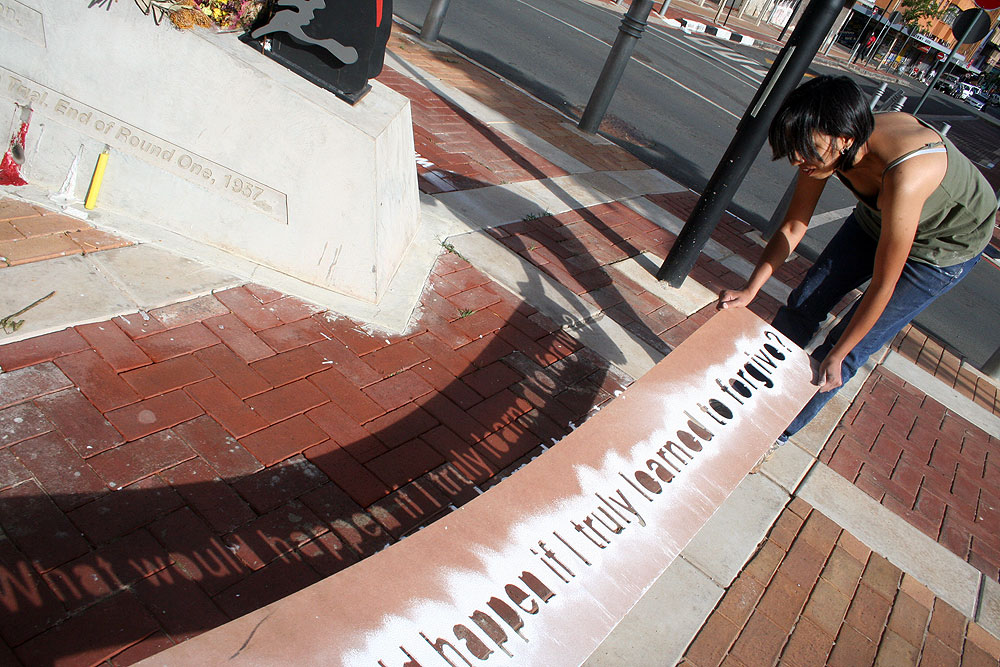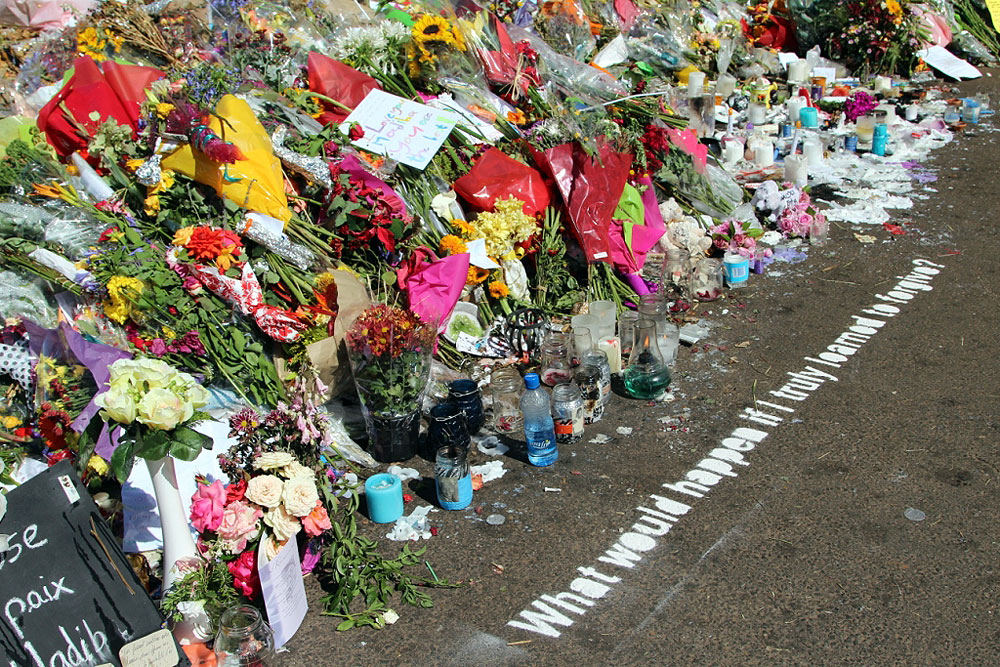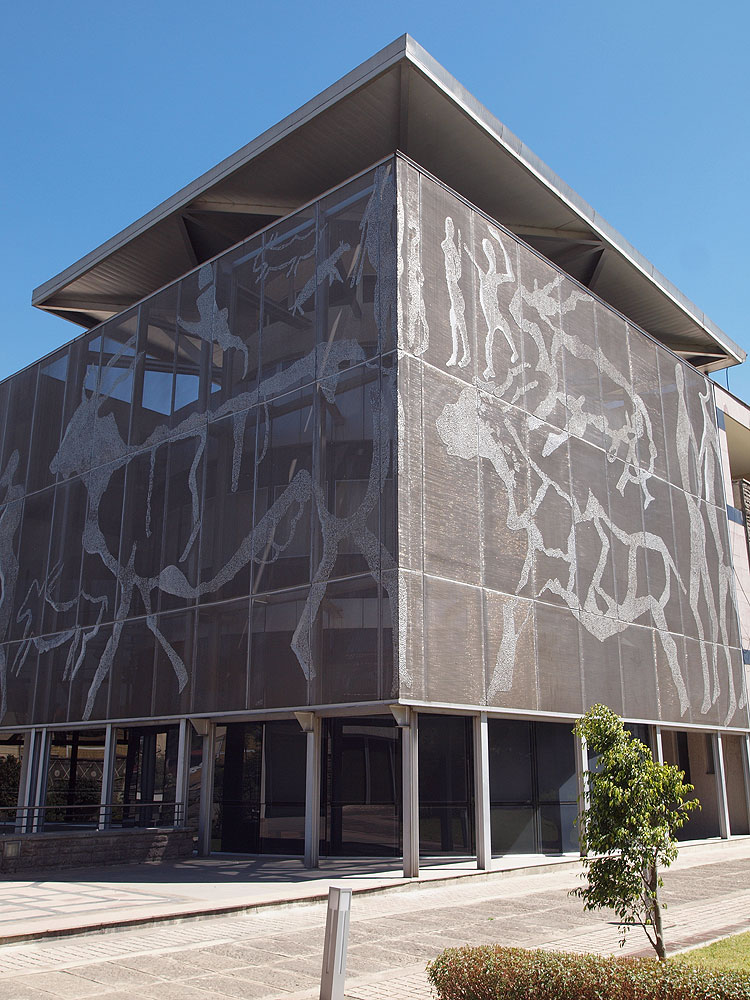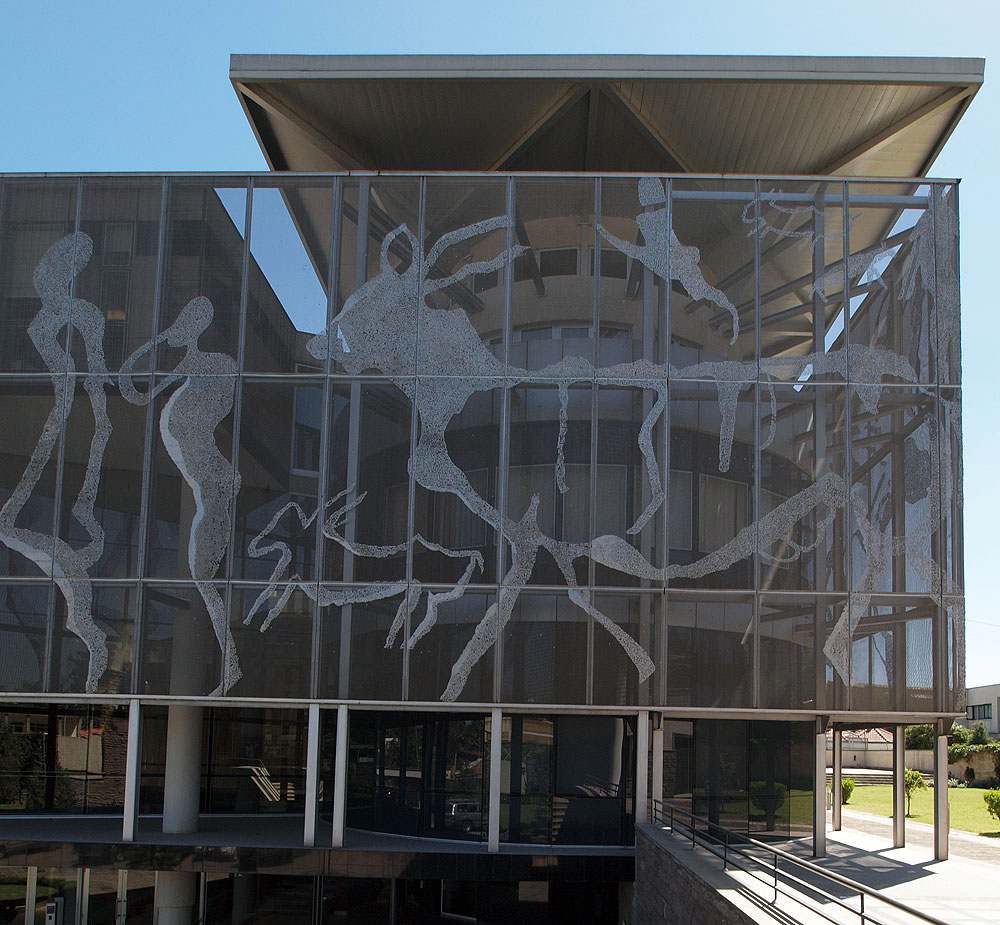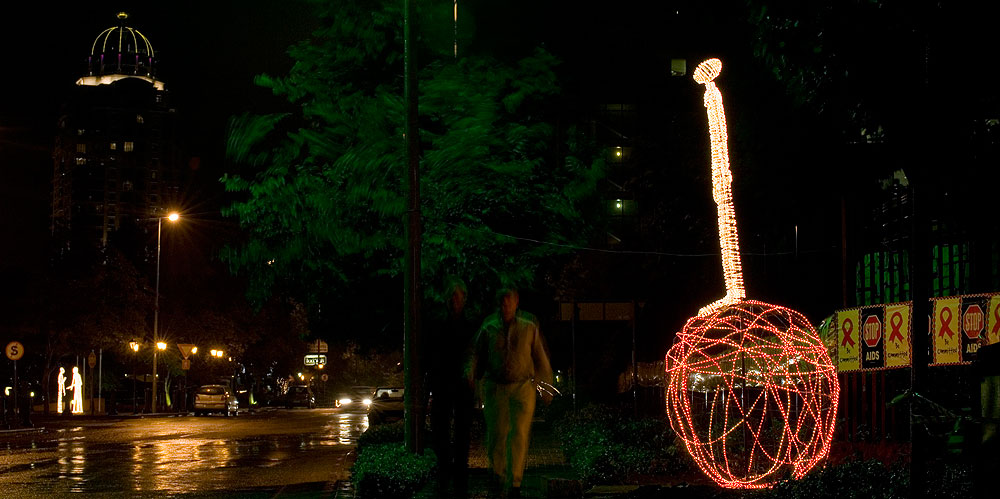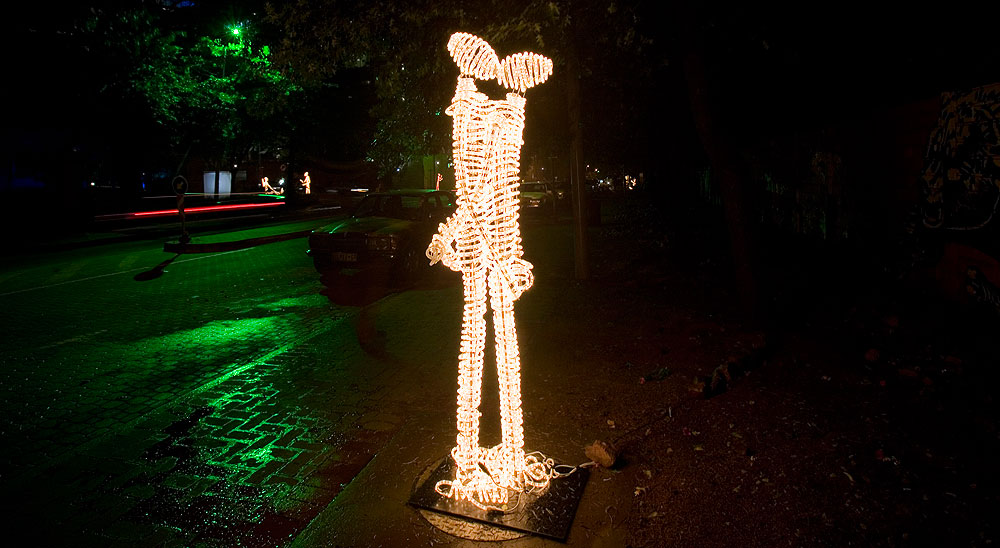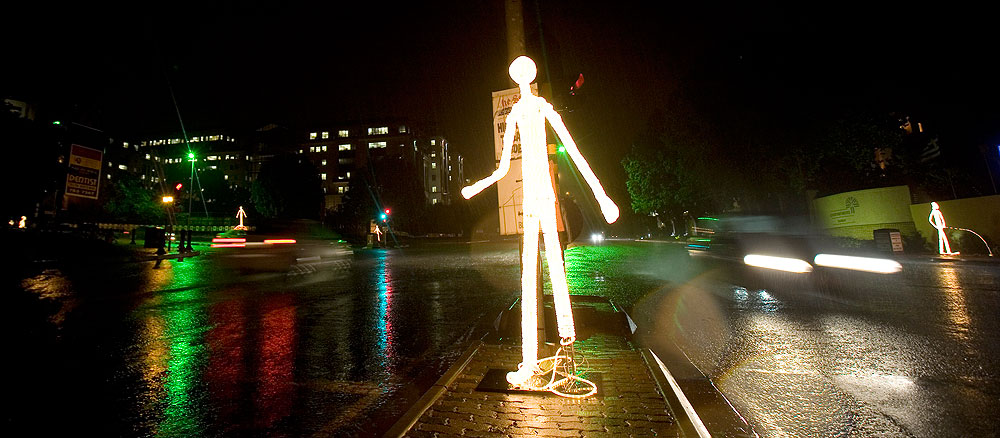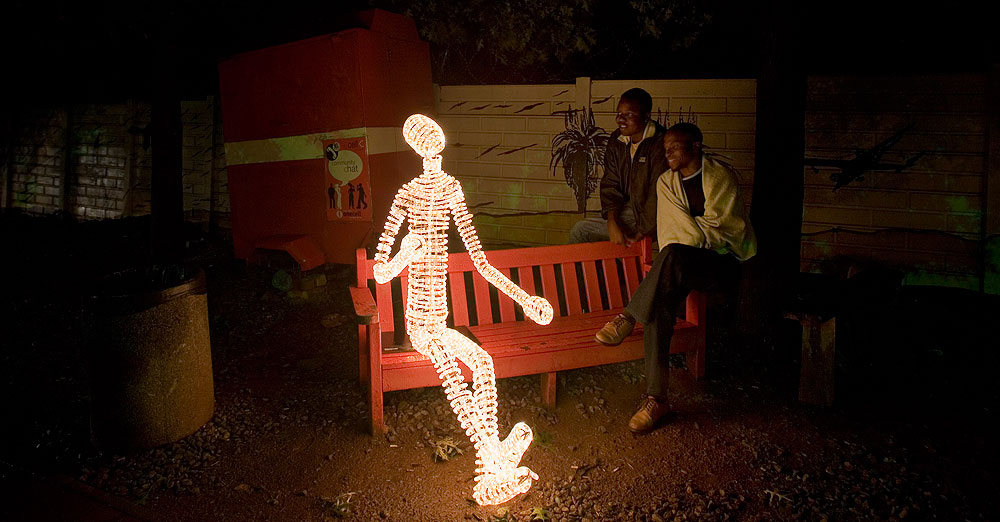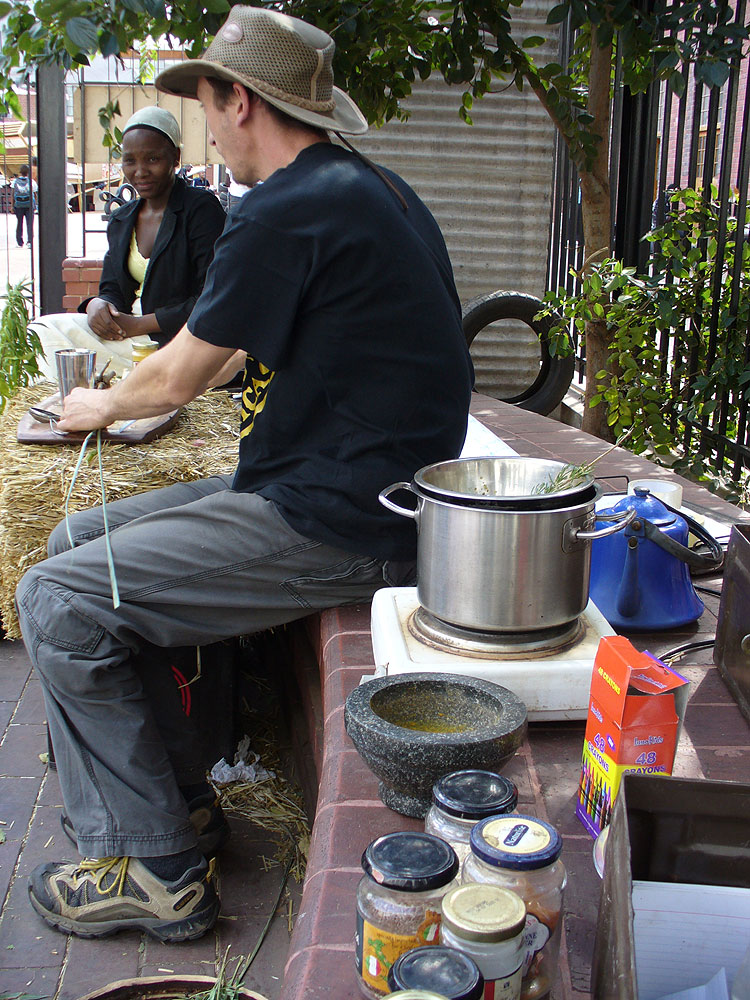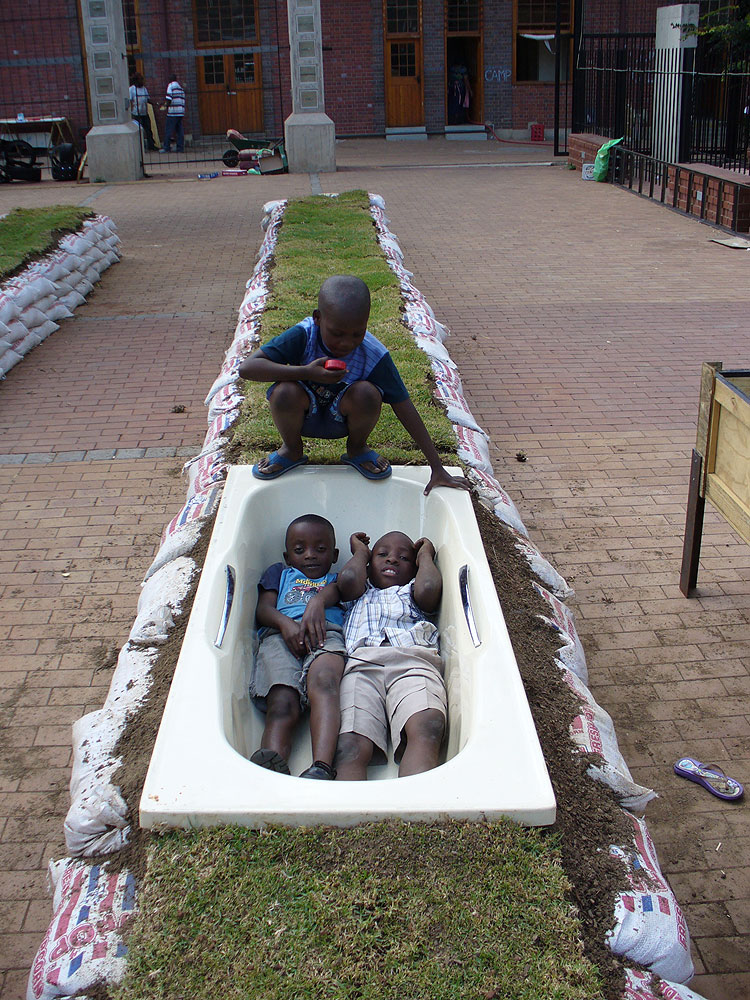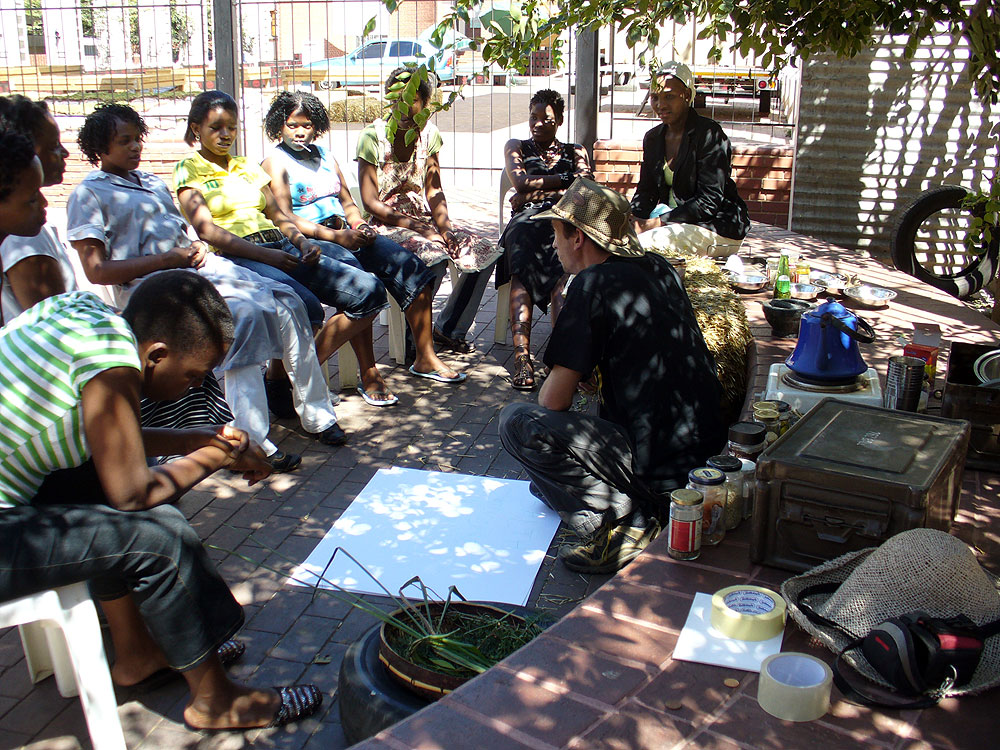Projects
This section outlines activities that include commissioned public artworks and community based and participatory public art projects.
2015 - Light installation (as embelishment during the festive season) for the Embassy of Switzerland, Pretoria, South Africa
This "Swiss light art installation with a hint of South African-ness" was a response to participate in the annual festive atmosphere of the street in Pretoria, where residents and other Embassy homes in the vicinity install Christmas themed lighting and decorations. However, instead of a typical Christmas decoration, a light installation was developed that has a distinct Swiss theme with a twist - a specific yet subtle inclusion of a South African context. Inspiration was drawn from the "Alpaufzug", a spectacular traditional migration of cows through the Alps. The cow procession is a significant event in the Swiss culture as over 350 cows are lead through the mountains over a 70-day period. Traditional Swiss art making reference the Alpaufzug through paper cut-out, symmetrical imagery. Drawing on this tradition these conventional forms of iconic Swiss representation was used to create light boxes that fit into the existing architecture of the Swiss Embassy home in Pretoria. The inclusion of South African and specifically Pretoria fauna and flora into this typical form of Swiss representation invite the viewer to carefully examine the artworks and almost "discover" the anomalies. A row of Swiss cows may be accompanied by a Nguni cow and a Jacaranda may find itself among a forest of Swiss pines.
Despite the light-hearted rendition of the work, one becomes acutely aware of the conceptual underpinnings of imagery that depict migration and its engagement in contemporary discourse. The literal search for and move to greener pastures is a global phenomenon that is not only evident with Syrian refugees, but visible in our own country. The very notion of "home" is a lucid one, where patterns of movement are evident throughout human history.
2014 - Pebble Mosaic, Prince Albert, South Africa
Two weeks were spent in Prince Albert in the Western Cape to create this large pebble mosaic for the Prince Albert Art Festival. A specific site was identified that both connects and separates two distinct communities within the area, around which the concept and design of the project was developed. All the materials and labour for the project were locally sourced and a series of conversations with varied groups and individuals in the town quickly followed.
A synchronistic recurrence of the tortoise as a theme led to the design and the actual production of the artwork included teams of people working on different parts of the project. While not everyone worked on all of the days, a team comprised of just under 80 people used three truck loads of sand, stones too numerous to count and 30 bags of cement to create this 56 square meters mosaic. The design included a tortoise shell on the one side of an existing pathway, with the edges of the tortoise mimicking the profile of mountains surrounding Prince Albert. The inside of the tortoise references the township, known informally as die Lap ("the cloth"). A few conversations suggested that the name is derived from a quilt (lappies kombers), which refers to an image of the place covered in flowers pre-development. Some have even referred to the entire place of Prince Albert as Die Lap. On the other side of the pathway the mosaic illustrates a huge flower (Botterblom) and the leaf of an aloe, known locally as a Kan-nie-dood ("can not die"). All these elements (tortoise and plants) are specific to the area.
The message conveyed through the work is that although life in Prince Albert may seem idyllic (as a holiday destination, tourist attraction and place to retire for many), the reality that confronts many speaks of a real need for survival and a resilience, as illustrated by the depicted tortoise (Bergskilpad) that eats the Botterblom and through the Kan-nie-dood. There are significant social challenges in this town, including high levels of excessive alcohol abuse and related alcohol fetal syndrome. A small element in the design alludes to an observation specific to the site of the mosaic. From very early in the morning and throughout the day, people walk up this tiny hill towards the bottle store with empty crates and return with full crates of beer and several boxes of wine. This phenomenon continues throughout the weekend. A few small tortoises, known as pad lopers ("path walkers"), placed adjacent to the desire line, illustrates this observation. Some of these pad lopers have a black square stone on their back, referencing a crate of beer; a heavy burden.
2013 - Beaded portrait for the funeral of former president Nelson Mandela
It was a great honour to create the official portrait for Nelson Mandela’s funeral in Qunu in December 2013. The work is made from stringed seeds, it spans two meters squared and was featured on global media.
Above: Beaded portrait of Madiba in progress. Right: Nelson Mandela beaded portrait (2013), Stringed beads, 2000 x 2000 mm.
2013 - Forgiveness
The decision to create a public artwork on forgiveness on Monday the 16th December 2013 was made prior to Madiba’s passing. The continuous messages of reconciliation and forgiveness re-iterated immediately after his passing reaffirmed the need for this temporary public art intervention for me. Early on Monday the 16th December 2013, Seejarim sifted lime powder through a stencil to create a text based artwork around the Magistrates Court in Johannesburg as well as outside Nelson Mandela’s house in Houghton.
The public artwork is in honour of Reconciliation Day and speaks to our specific history and about our need to forgive – both as a nation and as individuals. According to recent research, South Africa as a nation rates amongst the lowest on the happiness index, and I believe that it is largely due to our inability to forgive. Crime and other injustices on various levels are perpetuated by our personal resentments and as a South African contemporary artist, I would like the opportunity to make these concerns visible through a temporary and relevant public art intervention.
The artwork is posed as a question which forces us as viewers of the artwork to question our own personal positions of grudges and inability to forgive and thus alludes to the repercussions thereof. The text spells out the following words: “What would happen if I truly learned to forgive?”
The text is made from lime powder, some of which was obtained from Robben Island on another project in 2009. The artwork was temporary with the text lasting for a few days.
As a nation South Africa previously observed this day as the Day of the Vow, commemorating the 470 Voortrekker victory over the 10 000 Zulu army in the Battle of the Blood River in 1838. Later we acknowledged this day in 1961 with the formation of Umkhonto we Sizwe. Now in post-apartheid South Africa, we celebrate this as the Day of Reconciliation and this artwork reminds us of the significance thereof and how we as individuals can contribute to real healing of our community.
2008 - Figures representing articles on the Freedom Charter
Walter Sisulu Square, Kliptown, Soweto, Johannesburg
Commissioned by the JDA (Johannesburg Development Agency), Project Managed by Studio Mas Architects
Installed in November 2008
Each of the 10 sculptures represent one item on the Freedom Charter. The sculptures are made from layers of slate stone, with an inner structure of steel and concrete. The motivation for the use of stone references the name Kliptown ("klip" meaning "stone" in Afrikaans), as well as the process in which the Charter was adopted; where thousand of people gathered and wrote down their ideal vision on a piece of paper, which was then collated and reformed into the Freedom Charter. Each figure weighs between 600 kg and 1 ton.
Photo credit: Anthea Pokroy
2008 - Screens for the South African Chancery, Addis Ababa, Ethiopia. Commissioned by South African Government
The objective of this project was to create a sun-screen for the South African Chancery in Ethiopia. San paintings were used as subject matter to allude to Addis Ababa as a port of entry both by land and by sea. The screens are made of stainless steel mesh and approximately four-hundred-thousand pop rivets. The work was project managed by MMA Architects in March 2008. The separate screens measure: 34,2 x 9,1 m and 18,8 x 7,6 m.
Photo credit: Prof Jonathan Noble
2007-2010 - Why Men, created for the Sandton Business Improvement District, Johannesburg, [Project managed by Art Art Work (AAW!)]
Why Men (2007-2010), Illuminated public sculptures that promotes interaction installed around Sandton, Johannesburg during the festive season (December). The site specific figures responded to their location by interacting with elements or observations of human behavior in that specific space. For example, fishermen were placed in a water fountain, or a figure on a laptop sat on a bench frequented by executives.
Photo credit: Dean Hutton
2007 - Cascoland, The Drill Hall, Johannesburg
An awareness of the lack of anything green in the inner city led to the creation of two very long (11 m each) grass benches that served the public audience during the various activities of the Cascoland Festival. With the help of the Social Services Department, a vegetable and herb garden containing herbs specifically useful in the treatment of HIV Aids, was also created adjacent to The Drill Hall as part of this project.
2007 - Mural commissioned by Eskom
This mural was created for Eskom at Megawatt Park in Woodmead, Johannesburg in 2008. The mural measures 9,98 x 2,4 meters and was made from 0.8 mm solid panel electric wire, glue and board. The thin electric wire act as “colour” to create a pliable mural to fit an existing curved wall at Eskom’s head office. The subject matter depicts modes of renewable energy.
In recognition of Mahatma Gandhi [detail] (2006), Three-legged pot as zoetrope, thaumatrope, wheel and concrete base. Installed in Jennings Street, Fordsburg, Johannesburg
2006 - In recognition of Mahatma Gandhi (as part of the Sunday Times Heritage Project)
This memorial honouring Mahatma Gandhi features a "potjie" similar to the cauldrons in which passes were burned during protests in 1908. When the wheel beneath the cauldron is spun, a zoetrope enables viewers to see an image of a pass actually burning.
"On August 16, 1908, 3 000 Muslims, Hindus and Christians led by Gandhi (a Hindu), gathered outside the Hamidia Mosque and burned their passes, documents all people classified "non-white" by the government were forced to carry or face imprisonment. The huge bonfire, lit in a cauldron, marked the first burning of passes in South Africa and the beginning of Gandhi's satyagraha, or passive resistance, campaign." (Sunday Times Heritage Project)
2005 - Pin Code
For this public artwork approximately 140 000 household safety pins were attached to each other to create this 6,5 meter x 11,4 meter (circumference) installation. It is located in the foyer of MTN’s head office in Fairlands, Johannesburg and accessible without requiring permission.


